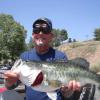Leaderboard
-
in all areas
- All areas
- Images
- Image Comments
- Image Reviews
- Albums
- Album Comments
- Album Reviews
- Topics
- Posts
- Stories
- Story Comments
- Story Reviews
- Classified Ads
- Classified Ad Comments
- Classified Ad Reviews
- Records
- Record Comments
- Record Reviews
- Websites
- Website Comments
- Website Reviews
- Status Updates
- Status Replies
-
Custom Date
-
All time
February 2 2011 - March 30 2025
-
Year
March 30 2024 - March 30 2025
-
Month
March 2 2025 - March 30 2025
-
Week
March 23 2025 - March 30 2025
-
Today
March 30 2025
-
Custom Date
03/10/2015 - 03/10/2015
-
All time
Popular Content
Showing content with the highest reputation on 03/10/2015 in all areas
-
After trolling here for a couple of months, I must admit I'm intimidated to post my first creations. I used a balsa blank that was close to the shape I wanted and the hand shaped the lure. On the craw, I used sanding sealer first, painted then coated. Building that I really learned the challenges of centering the weight and hook eyes. On the second, I shaped after dipping in the sandable sealer, then coated with rod epoxy, then I did my drilling etc. What a huge difference in working the holes. I really recommend this as it made the balsa much more stable for drilling. I'll use Devon 2t for the final coat. They weigh around .35 oz. Can't wait for the thaw to test them! Whatchayall think?1 point
-
Had the Lee 10 and had tons of problems. Got the Lee 20 and had the exact same problems. Got the RCBS, put the same lead in it and it's perfect. Only real gripe with the RCBS is that the nozzle is of a size where pouring small jigs takes a quick hand. Fully adjustable flow. While the RCBS does cost a bit it's a once in a lifetime purchase. Look around and you can get them delivered for around $350. Amazon has them for $368 delivered.1 point
-
No problem, I will down the track, I think the pot you are making for me atm will suck up the funds for quite a while!1 point
-
I've been using 1315 and EagleSupreme side by side for several months now. With either one I'm getting good results. First thing I learned when using these products is to make sure the paint is dry. My first few dips wrinkled and it ruined the patterns (not so good to see all that work go up in fumes). So after lots of trial and error (and advise from TU folks) I found that drying each coat of paint with a heatgun on low was necessary. Even doing that I had some patterns that wrinkled (usually white or pearl white). So I found an old food dehydrator, in good shape, and started hanging finished paint patterns in it @ 95+ degrees, for several days. Once the paint wasn't tacky to the touch they were ready. I use medical forceps to hold the lure by the tail hook hanger and dip them into a fruitjar full of sealer, making sure to cover the entire bait but not soaking it...just in and out once. Shaking the excess off the lure with a few quick flicks after it dripped over the sealer jar seemed to help....not too long...the stuff sets quickly. Put a stiff wire hook hanger thru the line tie and another smaller one, about an inch or two long (I made mine from floral wire), thru the tail hook hanger to wick any excess off the tail of the lure. I hang mine back in the dehydrator and crank it up to about 115 degrees. The stuff dries quickly and doesn't craze or wrinkle. After 30 minutes its dry to the touch and ready for another dip. After three or four dips and several hours baking the stuff is rock hard and has a good shine to it. Of the two sealers I prefer 1315 because its a little thicker and requires fewer dips for a good finish (two usually makes a good finish...three or four with Eagle). Also like the fact I can dip an old scratched up lure into this stuff and it comes out looking new. Thanks to the TU folks for some great advise on this subject1 point
-
get a utility knife with the replaceable blades. change blades as soon as they start getting dull.1 point
-
1 point
-
Let me try to answer your questions in a roundabout way. First of all if I wanted to build a suspending lure it would not be out of balsa. The first thing your going to have trouble with is installing enough ballast to make it suspend. The amount of ballast you'll have to have will require drilling out a lot of the wood and IMO you would have to reinforce the bait with either a wire through harness or some other form of reinforcement. It's going to be difficult to find a place for all the hardware in the bait as well. Is it impossible? Probably not, but there are a lot better choices of material to build a suspending bait out of. Again, that's just my opinion. If this is your first try at a suspending lure I would say to try it out of Azek PVC. There are multiple reasons for this. First of all it is extremely difficult to build a lure that comes even close to a suspending bait. It's all about water temp and weight and it will take multiple tests to get it right. I mentioned before in a post that the difference between being a slow sinker and a slow riser on one of the baits I was building was so infinitely small that the sliver of lead I removed in the last test wouldn't register on my digital scale even when it was set to thousandths of an ounce. This is where the waterproof PVC comes in handy. You don't have to worry about repairing the seal coat every time you test it. If you don't want to bother with the PVC there are a lot of wood species that are more suitable to a suspending lure. Just find one that is closer to the specific gravity of water than balsa. Not only will it require less ballast, which in turn leaves more room for hardware placement, it will also be much stronger than balsa. And by being stronger you won't have to worry about through wiring. Not trying to rain on your parade. Just trying to save you a lot of grief. good luck, Ben1 point
-
BarryBait & Hurley here is one that I foiled without losing details of the scales. The secret was after forming the scale pattern, put a layer of http://www.tackleunderground.com/community/gallery/image/13860-3d-foiled-dean-helton/ Here is how it was done, post #25 http://www.tackleunderground.com/community/topic/29011-making-3d-scales/page-21 point
-
I had the Lee Pro 4 20 furnace and had a ton of issues with clogging, dripping, and inconsistency. I spent more time working on my furnace than I did actually pouring lead. I sold it and bought the RCBS Pro Melt. Best investment you can make if you pour a lot. I have not had to do anything to make this furnace work for the last two years and I have put close to 200 lbs of lead through it.1 point
-
At Rowhunter's suggestion, I'm starting a PVC thread. I use it for all my lure building, for the following reasons: It is totally waterproof, so I can shape a lure, and then test float and ballast it without any sealing. I have a 3 gallon bucket of water in my driveway that I use for test floating. It is buoyant. The Azek PVC decking is as buoyant as poplar, a hardwood I used to build my jointed swimbaits from. The Azek trimboard is even more buoyant, like medium density balsa. I can make really active shallow cranks with it. It is strong. The decking is as strong as any wood, for lure building, and the trimboard, although not as dense, is still plenty strong enough for any crank. And I use it for my smaller two piece jointed lures, too. I caught a 7lb largemouth with a PVC trimboard spybait I made that was 4" long, but only 7/16" thick, and I had drilled several 3/16" holes up from the belly for my ballast. She ate the rear hook, and the bait held up fine. Both are strong enough to hold screw eyes with just a small pilot hole. No need for any reinforcement, or setting into holes filled with epoxy. I usually use the gap filling/brush on super glue alone to set my hardware, and a lot times my bills, too. I use the accelerant (thank you Ben) dripped onto the glue to help it set quickly, once things are positioned. It machines and carves well. Although the sanding dust is nasty, because it sticks to everything, including my sinuses, PVC is easily machined and shaped with the same tools I used for wood. As with any work, sharp tools work best. I cut out my bait profile, and lip slot, with a bandsaw, and try to drill any ballast hole while the bait has the flat sides, so I can drill straight holes with my drill press. I use an oscillating belt sander with an 80 grit belt to do my major shaping, working from a centerline I put on the bait after I've sanded the bandsaw marks off. I "carve" details with a dremel sanding drum, and drill out my eyes with a multi-spur bit on a drill press. I typically sand down from 80 grit to 120 grit with a vibrator sander, and finish up with a small piece of sandpaper to get edges and details softened. Because it has no direction-oriented grain, it carves really well with sharp tool. It can be laminated into bigger lure blanks using the same PVC glue plumbers use for PVC pipe, or you can use super glue. If you use both the PVC primer and the glue, the two pieces actually melt into one solid piece. As long as the two surfaces are flat and mate, you're good to go. It paints well. I can shoot Wicked White as a base coat onto a raw PVC bait, heat set it, and never have any separation problems with my paint schemes. When I've had occasion to remove some paint to modify a bait, I've had to sand down to the PVC to get the paint off. It never peels. Occasionally, heat setting too hot can cause trapped air to bubble up under the seal coat, so I generally seal baits by rubbing crazy glue, or thinned epoxy, over them before I paint, if I want a super smooth bait. But any bubbles that do appear can be popped by the sharp tip of an exacto knife, and they lay right back down when I press them with my exacto knife handle. I've never had any baits with popped bubbles fail. And, because it is totally waterproof, I don't have to worry about nicks and scuffs from rocks and hooks. Any top coat works. I've used epoxies, urethanes, and concrete sealers, with no problems. In short, it make lure building faster and easier, and that make it even more fun, so why I use it.1 point







